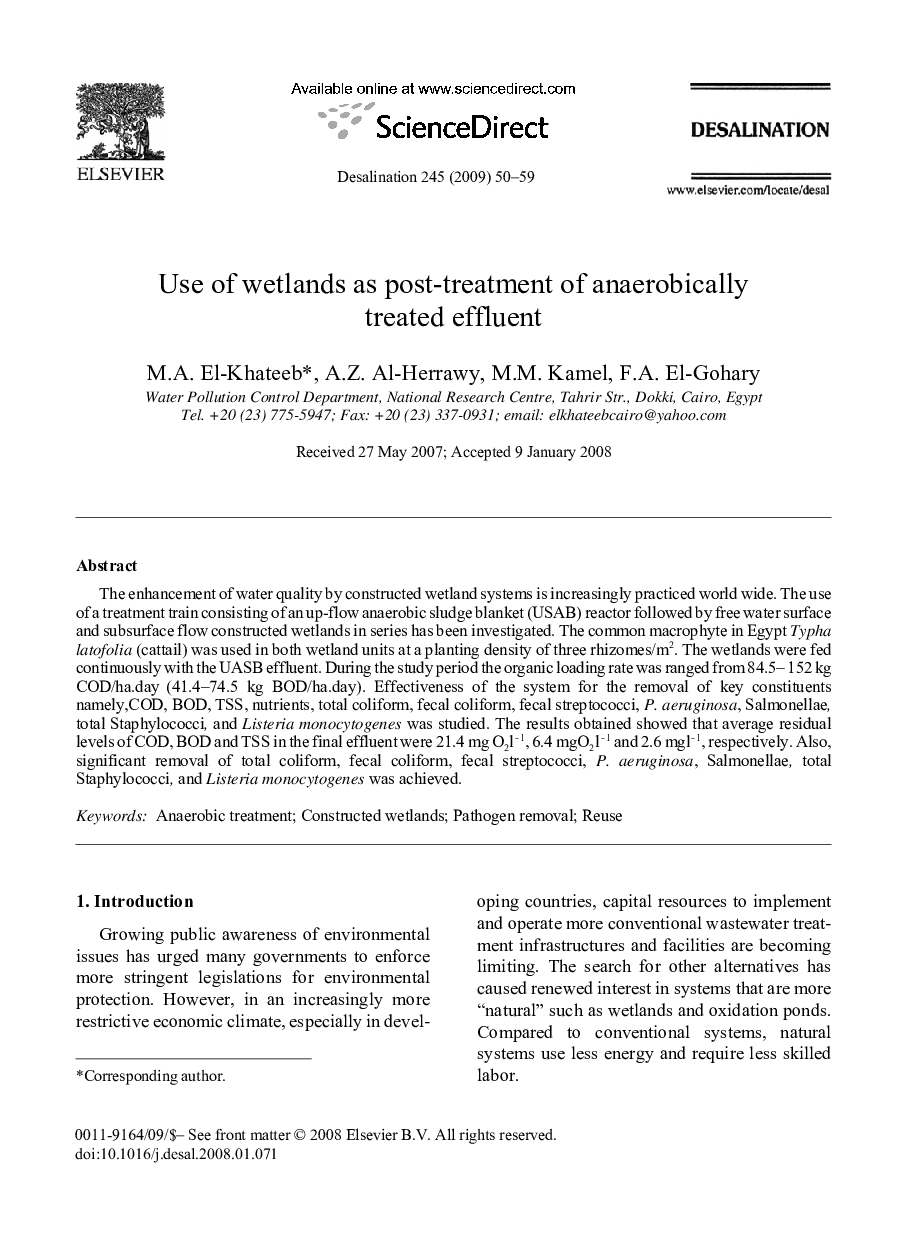| Article ID | Journal | Published Year | Pages | File Type |
|---|---|---|---|---|
| 626259 | Desalination | 2009 | 10 Pages |
The enhancement of water quality by constructed wetland systems is increasingly practiced world wide. The use of a treatment train consisting of an up-flow anaerobic sludge blanket (USAB) reactor followed by free water surface and subsurface flow constructed wetlands in series has been investigated. The common macrophyte in Egypt Typha latofolia (cattail) was used in both wetland units at a planting density of three rhizomes/m2. The wetlands were fed continuously with the UASB effluent. During the study period the organic loading rate was ranged from 84.5–152 kg COD/ha.day (41.4–74.5 kg BOD/ha.day). Effectiveness of the system for the removal of key constituents namely,COD, BOD, TSS, nutrients, total coliform, fecal coliform, fecal streptococci, P. aeruginosa, Salmonellae, total Staphylococci, and Listeria monocytogenes was studied. The results obtained showed that average residual levels of COD, BOD and TSS in the final effluent were 21.4 mg O2l−1, 6.4 mgO2l−1 and 2.6 mgl−1, respectively. Also, significant removal of total coliform, fecal coliform, fecal streptococci, P. aeruginosa, Salmonellae, total Staphylococci, and Listeria monocytogenes was achieved.
